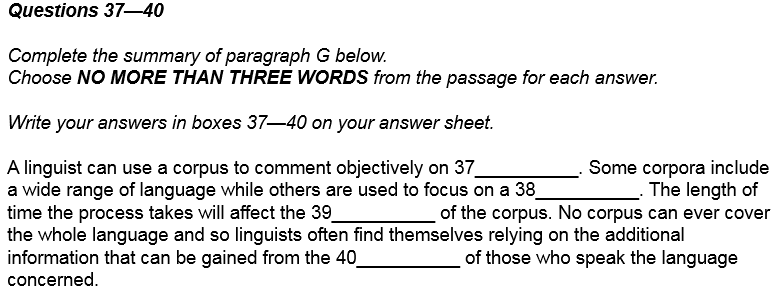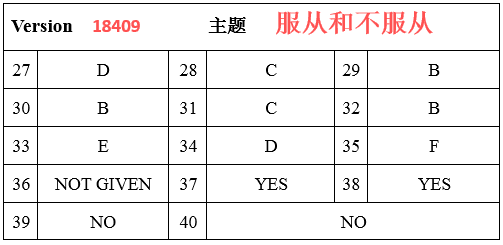托福閱讀高分是很多同學夢寐以求的考試結果,而閱讀部分考生也的確有相對更高的可能性拿到好成績,今天小編給大家帶來了托福閱讀沖刺滿分必備技巧介紹,希望能夠幫助到大家,一起來學習吧。
托福閱讀沖刺滿分必備技巧介紹
托福閱讀挑戰30滿分技巧:分段做題省去掃讀時間
在四六級考試中,閱讀時間也很少,雖然單詞相對簡單,但是篇幅較長,逐字閱讀肯定是沒有時間的,所以做題技巧中掃讀是很重要的環節,目的是找到與題目相關的段落或者語句才能找到做題依據。而在托福閱讀考試中,是每閱讀完一段就做只涉及該段的題目,信息集中,重要的是節省了大量的時間,緩解了托福閱讀文章通篇的眩暈感。而這部分題目就是四六級中常說的細節題。
托福閱讀挑戰30滿分技巧:分段閱讀打好基礎
在分段閱讀的同時,可以記下關鍵詞或者中心句,在文章結束時就可以有根據回想起整篇文章的脈絡結構,邏輯關系,對最后一題的選擇有很大幫助。同時題目中也明確給了做題方法,即沒有提到的信息或者不重要的觀點就可以排除了。
托福閱讀挑戰30滿分技巧:生詞不必怕
托福閱讀考試中對單詞量的要求還是很大的,即使單詞量很大了,也難免會遇上生僻詞的情況,而托福考試中選用的文章說明性特別強,往往是自定義 — 自解釋的模式,遇到生詞,即使不知道什么意思,也可以根據上下文語境弄清它們之間的關系,運用邏輯推理的方法作出正確的答案。其次,還可以分析選項,進行對比,往往會發現選項中通常會出現兩個意思相反的選項,此時再仔細重讀原文就可以排除錯誤選項了。
托福閱讀挑戰30滿分技巧:近義詞選擇有技巧
幾乎每段中都會有生詞意思辨析題,有些詞考生一看就認識,這樣的題目就很容易了,但是也不能粗心大意,如果時間富裕或者把握不大,可以把選項帶入文章中檢查一遍。對于那些不認識的詞匯,也是有許多技巧的。首先是分析詞性,采用排除法排除詞性不一致的選項。其次是用代入法。選項中給出的詞意一般就是考生認識的,將選項帶入,分析一下是否能夠保證原文合情合理,通順。
托福閱讀練習之冰箱的發展
By the mid-nineteenth century, the term "icebox" had entered the American language, but ice was still only beginning to affect the diet of ordinary citizens in the United States. The ice trade grew with the growth of cities. Ice was used in hotels, taverns, and hospitals, and by some forward-looking city dealers in fresh meat, fresh fish, and butter. After the Civil War (1861-1865), as ice was used to refrigerate freight cars, it also came into household use. Even before 1880, half the ice sold in New York, Philadelphia, and Baltimore, and one-third of that sold in Boston and Chicago, went to families for their own use. This had become possible because a new household convenience, the icebox, a precursor of the modern refrigerator, had been invented.
Making an efficient icebox was not as easy as we might now suppose. In the early nineteenth century, the knowledge of the physics of heat, which was essential to a science of refrigeration, was rudimentary. The commonsense notion that the best icebox was one that prevented the ice from melting was of course mistaken, for it was the melting of the ice that performed the cooling. Nevertheless, early efforts to economize ice included wrapping the ice in blankets, which kept the ice from doing its job. Not until near the end of the nineteenth century did inventors achieve the delicate balance of insulation and circulation needed for an efficient icebox.
But as early as 1803, an ingenious Maryland farmer, Thomas Moore, had been on the right track. He owned a farm about twenty miles outside the city of Washington, for which the village of Georgetown was the market center. When he used an icebox of his own design to transport his butter to market, he found that customers would pass up the rapidly melting stuff in the tubs of his competitors to pay a premium price for his butter, still fresh and hard in neat, one-pound bricks. One advantage of his icebox, Moore explained, was that farmers would no longer have to travel to market at night in order to keep their produce cool.
1. What does the passage mainly discuss?
(A) The influence of ice on the diet
(B) The development of refrigeration
(C) The transportation of goods to market
(D) Sources of ice in the nineteenth century
2. According to the passage , when did the word "icebox" become part of the language of the United States?
(A) in 1803
(B) sometime before 1850
(C) during the civil war
(D) near the end of the nineteenth century
3. The phrase "forward-looking" in line 4 is closest in meaning to
(A) progressive
(B) popular
(C) thrifty
(D) well-established
4. The author mentions fish in line 4 because
(A) many fish dealers also sold ice
(B) fish was shipped in refrigerated freight cars
(C) fish dealers were among the early commercial users of ice
(D) fish was not part of the ordinary person's diet before the invention of the icebox
5. The word "it" in line 5 refers to
(A) fresh meat
(B) the Civil War
(C) ice
(D) a refrigerator
6. According to the passage , which of the following was an obstacle to the development of the icebox?
(A) Competition among the owners of refrigerated freight cars
(B) The lack of a network for the distribution of ice
(C) The use of insufficient insulation
(D) Inadequate understanding of physics
7. The word "rudimentary" in line 12 is closest in meaning to
(A) growing
(B) undeveloped
(C) necessary
(D) uninteresting
8. According to the information in the second paragraph, an ideal icebox would
(A) completely prevent ice from melting
(B) stop air from circulating
(C) allow ice to melt slowly
(D) use blankets to conserve ice
9. The author describes Thomas Moore as having been "on the right track" (lines 18-19) to indicate that
(A) the road to the market passed close to Moore's farm
(B) Moore was an honest merchant
(C) Moore was a prosperous farmer
(D) Moore's design was fairly successful
10. According to the passage , Moore's icebox allowed him to
(A) charge more for his butter
(B) travel to market at night
(C) manufacture butter more quickly
(D) produce ice all year round
11. The "produce" mentioned in line 25 could include
(A) iceboxes
(B) butter
(C) ice
(D) markets
托福閱讀:詞匯之古代文明
the Nile civilization 尼羅河文明;
the Minoan civilization米諾安/克里特文明;
Atlantis(沉入海底的)亞特蘭蒂斯;
the Mayan civilization瑪雅文明;
Sodom and Gomorrah古城索多瑪和蛾摩拉;
Pompeii龐貝古城;
the Colosseum羅馬斗獸場;
pyramid金字塔;
Sphinx獅身人面像
托福閱讀相關文章:
★ 英語閱讀
★ 學習資料庫
★ 學習資料庫
★ 大學英語學習計劃書
★ 托福聽力備考階段高效提升必做4件事
★ 托福聽力7大類關鍵信號詞全面講解
★ 托福改革后首考落幕 新增“托福移動考點”
★ 托福閱讀備考5個步驟分享
★ 托福閱讀句子插入題解題本質原則講解
★ 短期內提升托福聽說讀寫的方法
上一篇:托福閱讀考試基本做題順序介紹
下一篇:托福閱讀細節題找對原文信息點技巧





